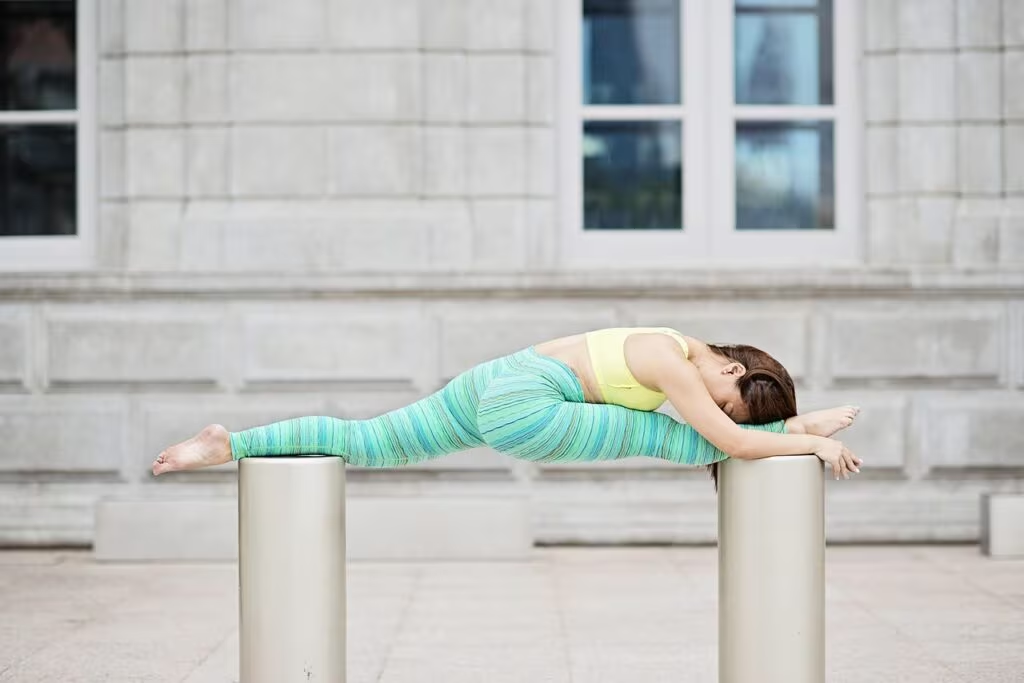The Power of Functional Core Training: Why Standing Abs Matter
For many, the thought of core training conjures images of endless crunches and planks on the floor. However, a highly effective, low-impact alternative exists that not only strengthens the deep abdominal muscles but also directly translates to better balance, stability, and, crucially, improved posture: the standing core workout.
This approach offers a complete, results-driven routine that requires just 10 minutes and zero equipment, making it ideal for busy professionals, those with limited mobility, or anyone seeking a break from traditional floor exercises. By engaging the core while upright, you train your muscles in the way they are used most often—to stabilize the body against gravity during daily movement.

Beyond the Six-Pack: Understanding Functional Core Engagement
Traditional floor exercises like sit-ups primarily target the rectus abdominis (the ‘six-pack’ muscle). While important, true core strength relies on the deeper stabilizing muscles, including the transverse abdominis (the body’s natural corset), the obliques (for rotation and side bending), and the muscles of the lower back.
Standing core movements are superior for functional strength because they force these deep stabilizers to engage constantly to maintain balance. This is known as anti-movement training (anti-rotation, anti-flexion, anti-extension), which is the core’s primary job in real life.
Key Benefits of a Standing Core Routine:
- Improved Posture: By strengthening the stabilizers that hold the spine upright, standing abs directly combat slouching and rounded shoulders caused by prolonged sitting.
- Accessibility: Eliminates the need for floor work, making it suitable for individuals with back pain, neck issues, or mobility challenges.
- Time Efficiency: A focused 10-minute routine provides significant stimulus without requiring a lengthy commitment.
- Enhanced Balance and Stability: Training the core while standing improves proprioception (body awareness) and reduces the risk of falls.
The 10-Minute Standing Core Strength and Posture Routine
This routine is designed to hit all major core functions—flexion, rotation, and anti-extension—in a fast, continuous circuit. Perform each exercise for the specified duration with minimal rest between movements. Focus on slow, controlled execution rather than speed.
Routine Structure (10 Minutes Total):
| Exercise | Duration | Focus | Key Action |
|---|---|---|---|
| 1. Dynamic Warm-up: High Knee March | 60 seconds | Activation | Bring knees high, pumping arms. Focus on lifting from the hip flexors. |
| 2. Standing Oblique Crunch | 60 seconds (per side) | Lateral Flexion/Obliques | Bring elbow to opposite knee. Crunch sideways, not forward. |
| 3. Standing Wood Chop (High-to-Low) | 60 seconds (per side) | Rotation/Transverse Abdominis | Hinge at the hips, rotating torso and pulling imaginary weight from high to low. Maintain a braced core. |
| 4. Overhead March | 120 seconds (2 minutes) | Anti-Extension/Balance | Extend arms straight overhead. March slowly, focusing on preventing the lower back from arching. |
| 5. Standing Side Bend with Weight Shift | 60 seconds (per side) | Lateral Stability | Place hands behind the head. Slowly bend directly to the side, keeping hips stable. |
| 6. Cool-down: Deep Core Breathing | 60 seconds | Recovery/Mind-Muscle | Stand tall, hands on belly. Inhale deeply, expanding the ribs; exhale forcefully, drawing the navel toward the spine. |
Total Working Time: 9 minutes, 30 seconds (Approx. 10 minutes including transitions)

Mastering Form for Maximum Posture Improvement
While the exercises are simple, their effectiveness hinges entirely on proper form. Rushing through the movements or relying on momentum will negate the core engagement and potentially strain the back.
Essential Form Cues:
- The Core Brace: Before starting any movement, imagine you are about to be punched lightly in the stomach. This automatically engages the transverse abdominis. Maintain this braced position throughout the exercise.
- Ribs Down: A common mistake is letting the rib cage flare out, which causes the lower back to arch (anterior pelvic tilt). Keep the ribs pulled down toward the hips, ensuring a neutral spine, especially during the Overhead March.
- Controlled Movement: Every repetition should be slow and deliberate. The goal is to use muscle tension, not momentum. For rotational movements like the Wood Chop, the movement should originate from the torso, not just the arms.
- Breathing: Exhale forcefully during the exertion phase (the crunch or rotation) and inhale as you return to the starting position. This deep, controlled breathing helps activate the deep core muscles.
If you find yourself losing balance or feeling strain in your lower back, slow down the movement or reduce the range of motion. The quality of the movement is far more important than the quantity of repetitions.
Key Takeaways for Lasting Core Strength
This 10-minute standing routine proves that effective core training does not require complex equipment or hours spent on the floor. By integrating functional movements into your daily schedule, you can achieve significant gains in stability and posture.
- Focus on Function: Standing exercises train the core for real-world stability and balance, directly improving daily movement patterns.
- Posture is a Core Issue: Poor posture is often a symptom of weak core stabilizers. Strengthening the transverse abdominis and obliques helps pull the spine into alignment.
- Consistency Over Intensity: Because the routine is low-impact and short, it is highly sustainable. Aim for three to five sessions per week for noticeable results in strength and reduced back stiffness.
- Listen to Your Body: If you have pre-existing back or joint conditions, consult a physical therapist or certified fitness professional before starting any new routine to ensure modifications are appropriate.
By committing just 10 minutes a day to these standing movements, you are investing directly in a stronger, more stable body and a healthier, more upright posture for the long term.
Original author: Nick Harris-Fry
Originally published: November 9, 2025
Editorial note: Our team reviewed and enhanced this coverage with AI-assisted tools and human editing to add helpful context while preserving verified facts and quotations from the original source.
We encourage you to consult the publisher above for the complete report and to reach out if you spot inaccuracies or compliance concerns.

